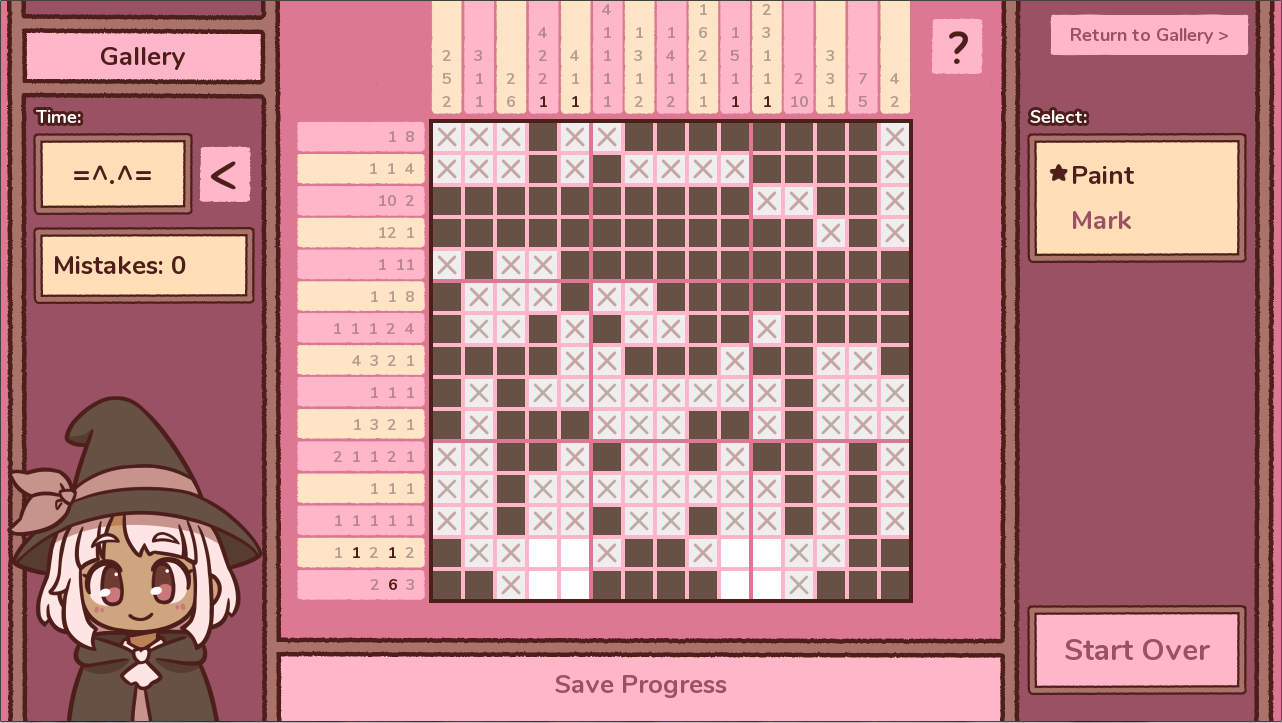For what it's worth, I'm pretty sure I managed to solve all charms without guessing. Some of them required thinking a step or two ahead though! For instance, in the situation I think you're talking about in "Me!", what happens to the upper line if the lower line is too far left or too far right? You'll get a contradiction of some kind -- you can't satisfy both the horizontal and the vertical clues at once!
So there are two ways to finish this out, I think.
1) Typically, there is a "meta-rule" that every puzzle has one unique solution. This is rarely if ever broken, because a puzzle with multiple solutions doesn't technically contain enough information to be solved; it's usually very frustrating! So, if you ever find yourself in a perfectly symmetric puzzle state -- as here, where the remaining clues and relevant board is perfectly left-right symmetric -- then any choice you make must also reflect that symmetry.
In this case, if you pick the rightmost available cell on the bottom row, you must also pick the leftmost. But then it's impossible to make one single region of six cells when you've already spread them eight cells apart. Thus, you must exclude the rightmost cell (and therefore also the leftmost cell).
2) I distinguish "lookahead" from "guessing" if I can see a contradiction in at most one step. Usually, it takes me some time in "lookahead" before I learn and recognize a new rule of inference; the rule is just a shortcut for recognizing when that type of contradiction would appear again.
In this case, if you pick the rightmost available cell on the lower line, you can quickly see that the two remaining 1-cell groups on the upper line must both be on the left side of the puzzle. That is, they must be touching, and thus not two 1-cells at all, but a single 2-cell. This contradicts their row clue, and so is impossible.
The key here is really to play the 1-1 clue on the upper line against the 6-clue on the lower line. Only one arrangement of the 6 makes a 1-1 arrangement even possible. Once you have the strategy of playing one group against another like this, it stops looking like "guessing" and starts looking like "checking constraints".
Personally, I think (2) is the "morally correct" reasoning; but having (1) in your back pocket can help focus your attention, even if you don't use it to make progress!
I tried it for the third time. It does work using the lookahead method. Which is why the Mark feature should be a standard in every nonogram game! If you put the 6 to one side, you can't put the single dot above it on that side, so it doesn't work. That actually solves the 6 but all you need is one dot more. Thanks again!


